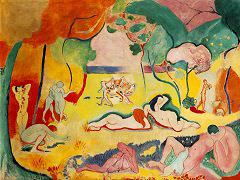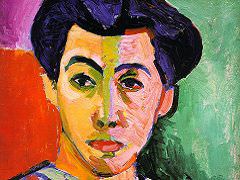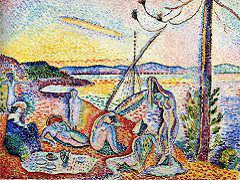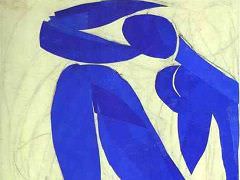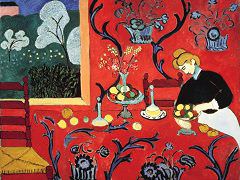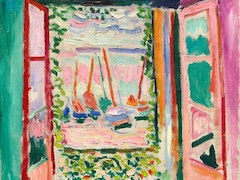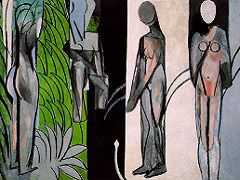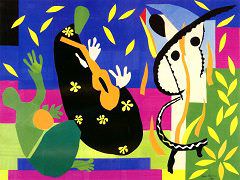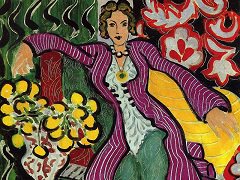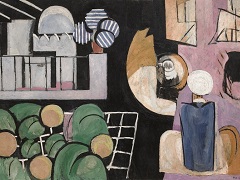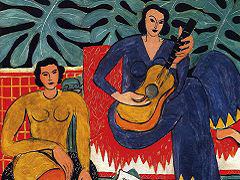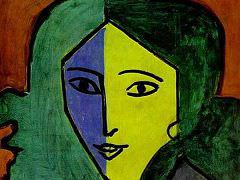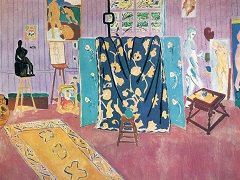Still Life with Aubergines, 1911 by Henri Matisse

The title of this picture is a monumental understatement, and one wonders if the artist used it ironically. It is, in terms of accessories and devices, one of the most complete presentations of his ongoing fundamental theme, the conversion of the artist's own studio into the idyllic world of Joy of Life. This was a personal and artistic quest lasting a lifetime, and it would be unreasonable to expect that one single canvas could sum it all up. Still lacking here is the literal presence of the model and of the artist, but by the time we encounter these phenomena in the smaller-scale, more intimate works of the twenties, the grandeur of this design would be beyond Matisse, at least momentarily, if only because he was con-centrating on more delicately nuanced phenomena of vision and subject.
An inventory of this picture is mandatory. Three aubergines are balanced precariously on a table whose red cloth carries an undulating white pattern that reinforces their tuberous shape. A mirror at the left, partly obscured at the bottom by a drawing portfolio, reflects these and other objects on the table in an inconsistent fashion. It is as if Matisse is stating that the artist's mirror image of nature in a painting may take certain licenses with reality in the interests of the picture itself. That it is indeed a mirror, and not another painting within a painting, is demonstrated by the reflection of part of the folding screen with floral pattern that occupies the center of the composition. Behind the screen we glimpse the top of an open door, probably leading to another room, where our eye is arrested by a checkered blue hanging. On the wall to the right is an open window with a real landscape beyond. For the rest, the floor and the wall are covered with abstract five-part floral patterns, all identical; this uniformity of the horizontal and vertical planes sets up a key surface tension with the illusion of spatial depth, a depth that opens both outward and inward (through the mirror reflection) along three separate diagonal axes. Originally the picture carried a painted frame several inches in breadth, with the identical floor-wall pattern, thus heightening the effect of decorative continuity and further reducing the scale of the aubergines themselves; unfortunately, this has been barbarically cut away. The total effect of the picture is one of an imaginary landscape constructed of a studio interior, since the space is as rich in floral abundances as it is in conventional studio props. Thus for the present Matisse completes, at vast scale, his allegory of the artist's world, seen here more emphatically than before as a garden of paradise. His well-known admiration for Persian miniatures, many of which illustrate actual gardens of delight, is here sublimated into a major theme of Western art, one that is central to Matisse's creative odyssey.

